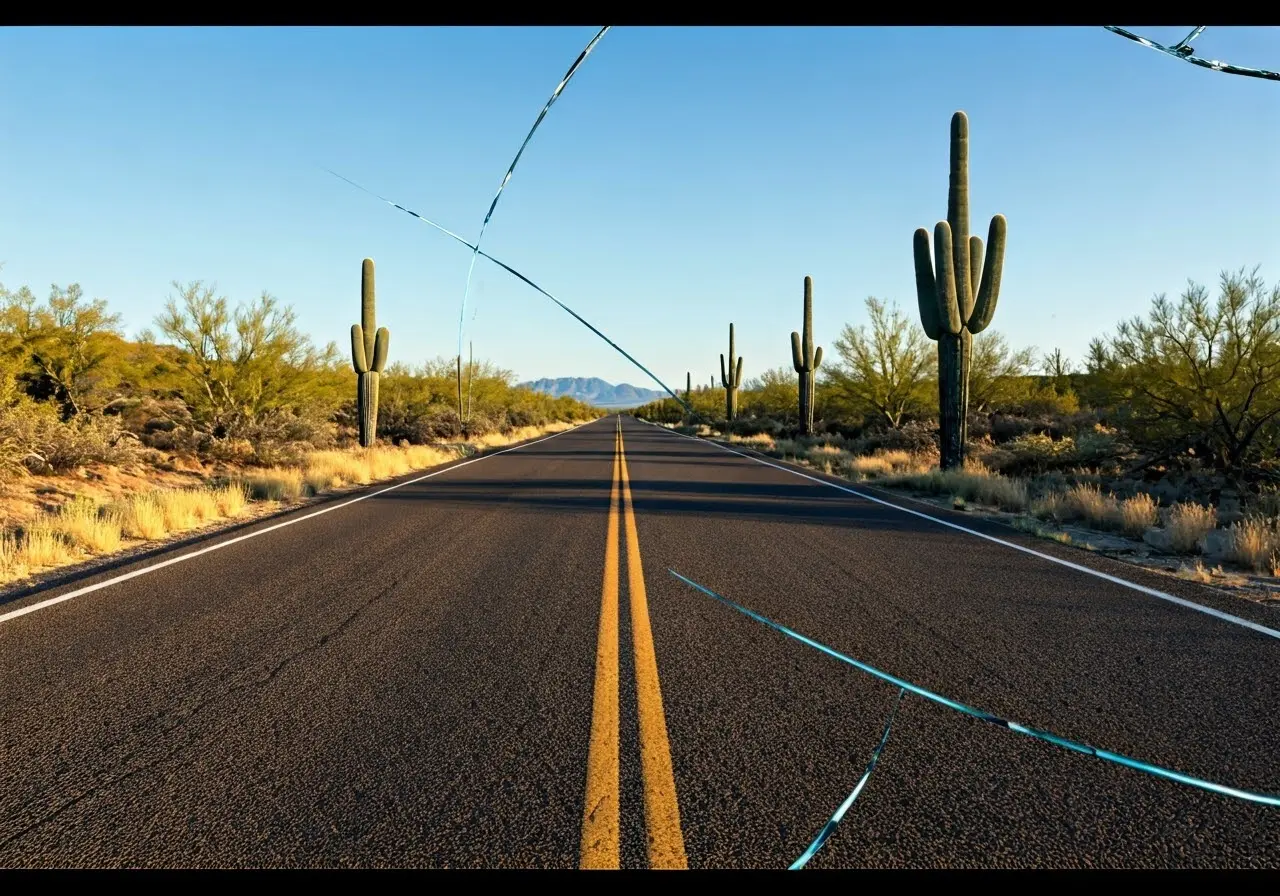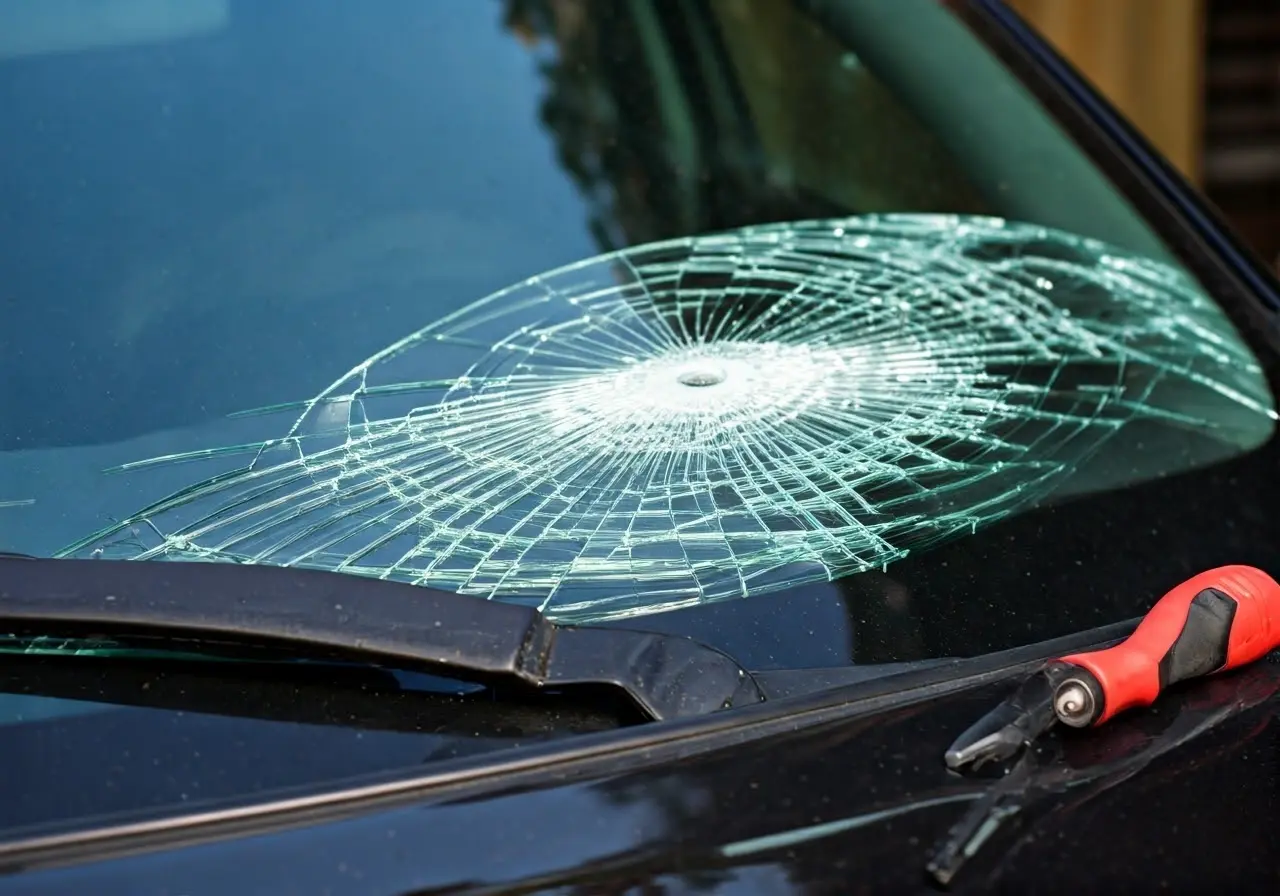A car windshield does more than just keep the bugs out of your teeth when you’re cruising down the highway. It plays a crucial role in the overall safety and integrity of your vehicle. However, many drivers are unsure when it’s time to repair a small chip or crack, and when it’s best to replace the entire windshield. In this blog, we’ll guide you through the signs that indicate you might need a windshield replacement and the importance of keeping your windshield in top condition.
Signs Your Windshield Needs Replacement
Understanding the signs that indicate a windshield replacement is necessary can prevent potential risks. Look out for large cracks, multiple chips, or damage that impairs your line of sight. These can compromise the windshield’s integrity and warrant a replacement.
A critical sign that a windshield needs replacing is when cracks intersect or form a spiderweb pattern. These types of cracks cannot be simply repaired, as they affect the core structure of the glass, thus compromising your safety. According to 6 Signs You Need a Replacement Windshield, you should also be wary of visible chips that are over an inch long or if you notice any hail damage that results in a pockmarked effect on your windshield.
Furthermore, discoloration or cloudiness on the glass, often caused by exposure to harsh weather conditions, is another indicator. Over time, these cloudy spots can obscure your vision, especially at night or during heavy rains when visibility is already poor. These can be seen as yellow or white patches on the glass, which are not just cosmetic blemishes but serious impediments to your driving.
Understanding the Role of a Windshield in Safety
Your car’s windshield contributes significantly to its structural strength. In the event of a collision, it helps protect passengers and supports the deployment of airbags. A compromised windshield can lead to greater injury risks.
The windshield acts as a crucial shield against external elements such as wind and debris. Imagine driving through an unexpected hailstorm; without a robust windshield, you’re exposed to ice projectiles that could cause harm. In modern vehicles, windshields are also integrated with advanced safety systems like Advanced Driver-Assistance Systems (ADAS), amplifying their role in accident prevention. Sensors for lane-keeping and collision warning depend heavily on a crystal-clear, intact windshield to function properly.
Moreover, airbags are designed to deploy directly into the passengers but are supported by the windshield to bounce back towards the occupants. In scenarios where the windshield is not intact, there is a risk of the airbags failing to provide full protection, potentially leading to severe injuries during an accident. Thus, maintaining a healthy windshield isn’t just about visibility; it’s also about ensuring the vehicle’s crucial safety features remain functional.
The Difference Between Repair and Replacement
It’s crucial to know when a simple repair will suffice versus when a full replacement is necessary. While small chips and cracks can often be repaired, extensive damage or damage in a critical area typically requires a replacement.
According to Windshield Woes: What Every Car Owner Should Know, windshield repair is generally suitable for chips no larger than a quarter and when the damage isn’t directly in the driver’s line of sight. This requires cleaning the area and injecting resin to seal the crack, which helps to prevent further spreading. Repair is a quick and cost-effective method, but the decision to repair is heavily dependent on the damage’s size and location.
In contrast, replacement involves removing the old windshield and installing a new one. This is necessary when the damage is extensive or if there are multiple chips over a broad area. Replacement is more costly than repairs but ensures the vehicle maintains its structural integrity and that all embedded technologies are re-calibrated correctly. The factors influencing this decision include the severity, location, and spreading tendency of the crack, as well as any underlying problems that may compromise the strength of your windshield.
Factors Affecting Windshield Replacement
Several factors can influence the need for a windshield replacement, including the size and location of the damage, weather conditions, and the quality of the glass. Understanding these can help you make an informed decision.
Weather conditions play a substantial role. In areas with extreme temperatures, a small chip may expand into a large crack due to the glass’s contraction and expansion in response to changing weather. Similarly, regions prone to heavy hail or severe storms might see an increased frequency of required replacements. Another consideration is the type of glass used; high-quality, tempered glass will withstand impacts better than standard options, thus prolonging the windshield’s lifespan.
Additionally, the correct installation of the windshield initially can affect how soon you’ll need to consider a replacement. Poor installation can lead to improper sealing, which may cause water leaks, wind noise, and even the gradual weakening of the adhesive bonding. To ensure that your windshield functions as intended, always seek professionals adept at precise installations. Checking your insurance coverage for glass replacements can also influence decisions, as some policies might cover significant portions of replacement costs, effectively reducing your financial burden.
Choosing the Right Professional for Your Replacement
Finding a qualified technician to replace your windshield is essential for ensuring safety and quality. Look for certified professionals with good reviews to guarantee a job well done.
When selecting a professional for windshield replacement, it’s important to evaluate their experience and expertise with modern technologies such as ADAS re-calibration. Not all auto glass services offer the necessary calibration needed to ensure these systems function correctly post-installation. Therefore, prefer services like Big Time Glass that emphasize quality, precision, and cutting-edge techniques in their offerings.
Always inquire about the type of glass the technician will be using for replacement. OEM (Original Equipment Manufacturer) glass is typically preferred for maintaining the same quality and specifications as the original. Thoroughly check customer reviews, ask for warranties on the service, and confirm their policy on after-service support to address potential issues. These factors collectively ensure that your windshield replacement not only meets but exceeds the safety standards required for modern vehicles.
The Importance of Timely Replacement
Recognizing when to replace your car windshield is crucial for your safety and the safety of your passengers. While minor chips might be easy to ignore, attending to them sooner rather than later can prevent more significant issues down the road. Remember, your windshield is a vital component of your vehicle’s safety system, and maintaining it should always be a top priority. For reliable windshield services, visit Big Time Glass today!



